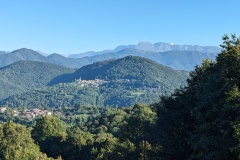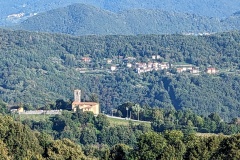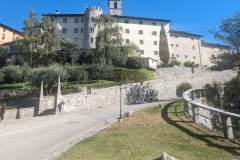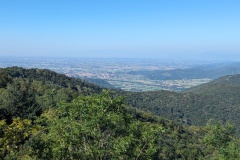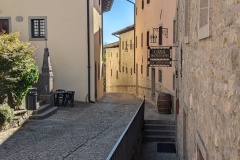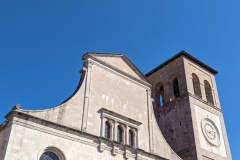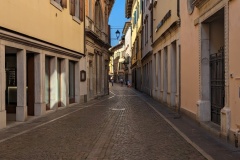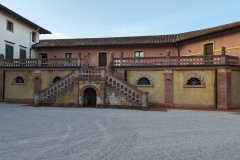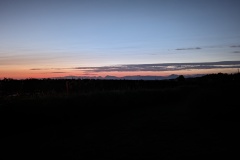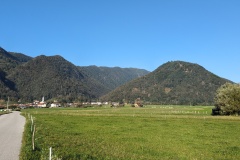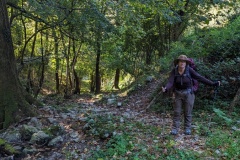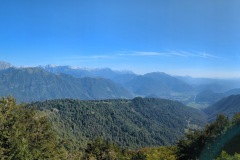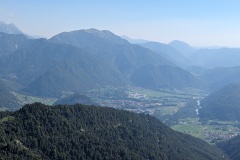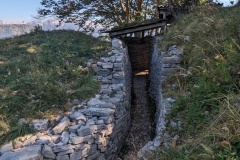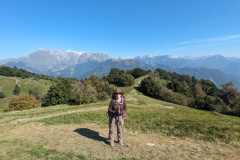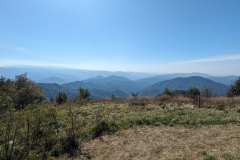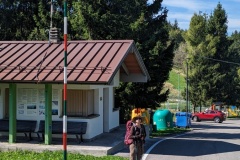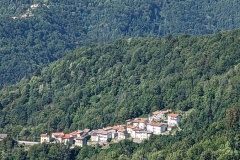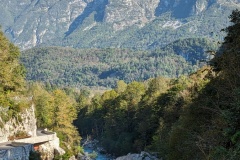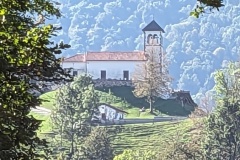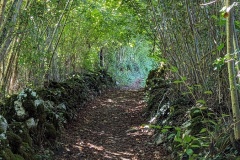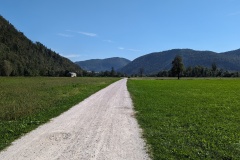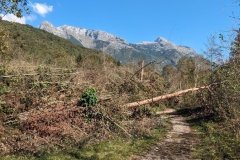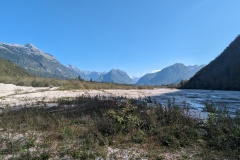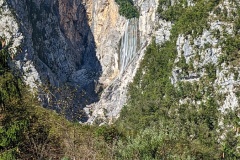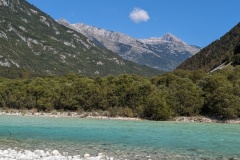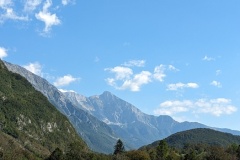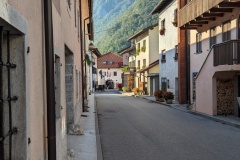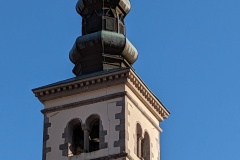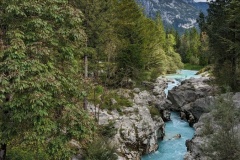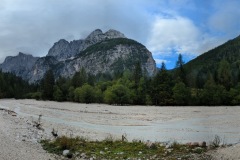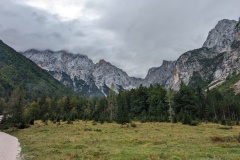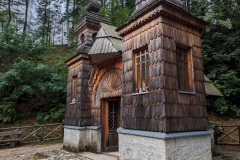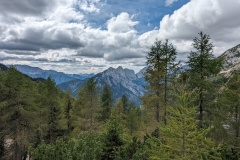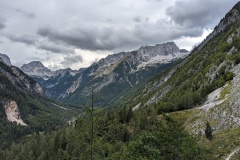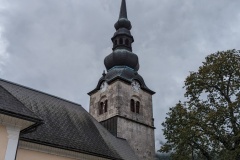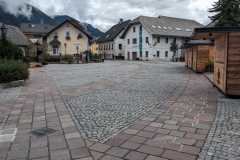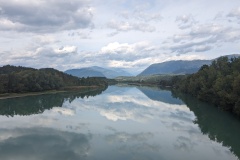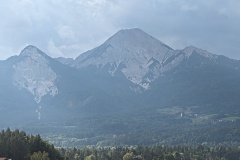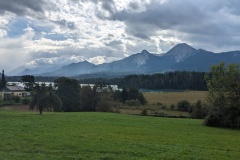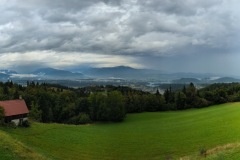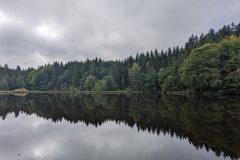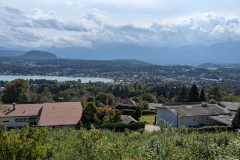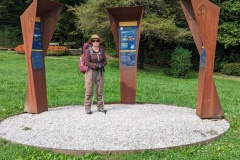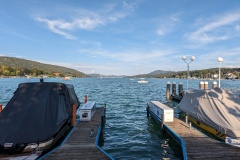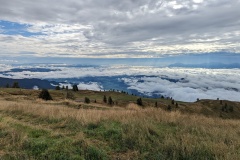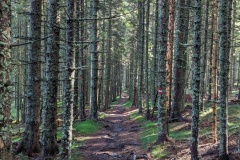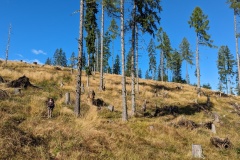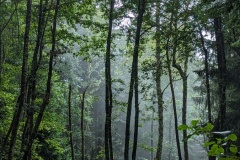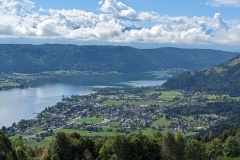We had walked all of today’s route in the opposite direction, in the rain, back in 2018. We therefore decided to walk down the road to Castelmonte, where we could then get the bus into Cividale and do our washing before heading on to our accommodation. (I had spent a while trying to book one of the many hotels in Cividale, before being told that there is a big car hill climb taking place this weekend, and that all the accommodation had been booked months ago. We finally found a wine estate just north of Cividale offering accommodation.) We were pleased with ourselves as we reached Castelmonte, having walked 13.3km, in in 2.5 hours. This gave us time to walk round the fortified village, buy bus tickets, and enjoy a coffee and cake. The bus left exactly at 12:09 and we were in Cividale about 20 minutes later, having seen numerous temporary barriers erected for the hill climb, and some of the 250 cars in the “pit area” at the entrance to the town. We were soon in the launderette and had time to walk round the town centre, before heading back to the bus station for the 3:08 bus to Togliano. At 3:09, the board changed to show that the bus had been cancelled. We therefore had another few kms walk northwards, to reach the small village in the centre of vineyards. Our accommodation is the most spectacular so far, in a large old building attached to the manor house. We are the only occupants, and have an enormous sitting room all to ourselves. (There was a free bottle of estate wine in our bedroom; excellent and soon to be available in the UK.) We walked to a small trattoria just outside the village, with a spectacular sunset going to, and coming back from it. We have a short walk tomorrow, so the plan is to take the bus back to Cividale and explore the town, and then walk on to our next stop, back in Slovenia.
